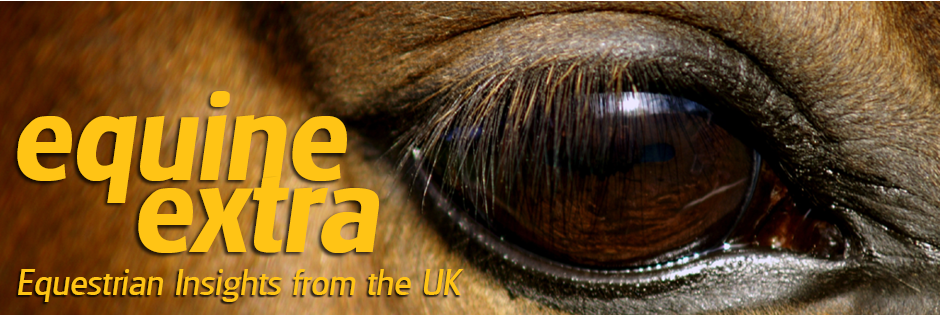Have
you ever been frustrated by a horse that refuses to drink water? If so, you’ll
be able identify with the well known saying that dates right back to the 12th
century and states: “You can lead a horse to water, but you can’t make him
drink.” Basically it means you can provide an opportunity for your horse to
drink, but you cannot force him to actually do it – and just like most people, horses
tend only to do what they have a mind to do. However, for horse owners faced
with a horse that refuses to drink, the lack of water intake quickly becomes of
immense concern. Water consumption is extremely important in the digestive
process to avoid impaction colic, dehydration and other ailments, many of which
can become life threatening.
So
how much water does a healthy horse consume in a day? The average horse will
take in between 22 and 45 litres of fresh water per day, but just like humans,
different horses crave or need different water amount intakes – for example a
lactating mare will need 50-80% more water per day for milk production compared
to the average. A horse deprived of feed, but supplied drinking water, is
capable of surviving 20 to 25 days, but a horse deprived of water may only live
for somewhere between three and six days and even after lacking water intake
for two days, a horse may refuse to eat, exhibit signs of colic and other
life-threatening conditions.
In
the heat of summer, just like us, a horse will enjoy drinking cool, fresh
water, but in cold winter situations, difficulties arise when providing water
that is too cold or in a semi-frozen state. Humans enjoy a cup of hot tea,
coffee or chocolate to warm their internal system and satisfy needs in the
winter and in a similar vein, horse owners now understand that warming the
drinking water for their horse during the winter will lead to him consuming
more water, helping to maintain good health.
To
fulfil their nutritional needs, domestic horses depend on the consumption of
forage consisting of a variety of grasses and grass type feeds. In the summer,
if horses have the advantage of daily grazing on fresh pasture grasses they
will be consuming water as they eat the grasses, as these contain large amounts
of water – typically up to 80% of the volume of fresh, leafy grass - which is
likely to reduce the desire of the horse to obtain water through drinking, as
his needs are satisfied.
In
the winter however, the horse depends upon the forage of dried grasses or hay,
with a lesser content of water – down to around 25% in hay. Therefore, a horse will
need to increase his consumption of water in the winter months, compared to
this time of year when summer grazing is plentiful.
The
workload of a horse also varies with the seasonal weather conditions as owners
do not tend to ride or work their horses as much during cold winter months. When
spring arrives and progresses into summer, the horse’s activity levels will
rise and lack of water consumption will potentially lead to dehydration.
Dehydration
in horses is an extremely serious situation and can occur during strenuous
exercise, stressful situations, or in cases of bouts of digestive upset,
particularly when there are loose droppings. Lack of water can also mean lack
of electrolytes, which include the vital minerals sodium, chloride and
potassium and a lack of these can lead to kidney failure in the horse, if he is
not rehydrated quickly.
Horse
owners can identify dehydration in their horse by learning to recognise the
signs, which include sunken eye or dullness, lethargy, dry skin and mouth,
drawn up flanks, depression or excessively ‘thick’ saliva. Another sign of
dehydration is a high level of protein in the blood, which can be determined by
a blood sample taken by a vet. The dehydrated horse many exhibit one or a
combination of these signs.
A
simple, but not always accurate way to judge dehydration in horses is to
conduct a simple skin pinching test. Pinch up a fold of the horse’s skin – on
his neck is good place - and then release it. The skin should immediately
return back into its natural position. If it remains in a ridge from two to
five seconds this could be a sign of mild dehydration.
The
longer the skin remains in a ridge indicates increasing severity of the lack of
water in the horse’s system. Skin that remains in a ridge appearance for ten to
fifteen seconds is the alert for immediate veterinary assistance, for the skin
is demonstrating signs of severe dehydration.
You
should remember to offer the horse cool, fresh water often during strenuous
activities. If the horse is at a location where the drinking water does not
have the same taste as the water at home, the horse may refuse to drink. To
overcome this, before going to a competition or training session, try flavouring
the home drinking water for a few days prior to the journey with something like
apple juice to accustom the horse to the flavour. You can also add electrolyte
to water, but remember to always offer ‘plain’ water alongside this.
Such
simple management practices by the horse owner during stressful events can help
prevent the onset of dehydration. Know your horse and look for the signs of
dehydration and conduct the “pinch test” frequently. Provide adequate fresh,
clean water often and if there is any doubt of the possibility of the severity
of the situation, contact a vet immediately. The rule of thumb is, wherever you
are with your horse, if you are consuming and needing a greater water intake,
the chances are your horse is feeling the same. Be safe and smart - and keep your
horse hydrated!

